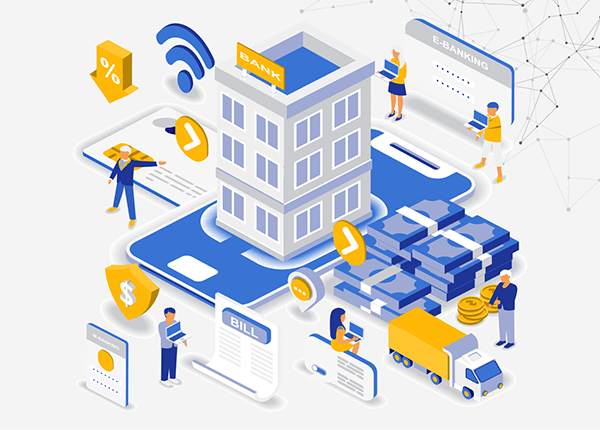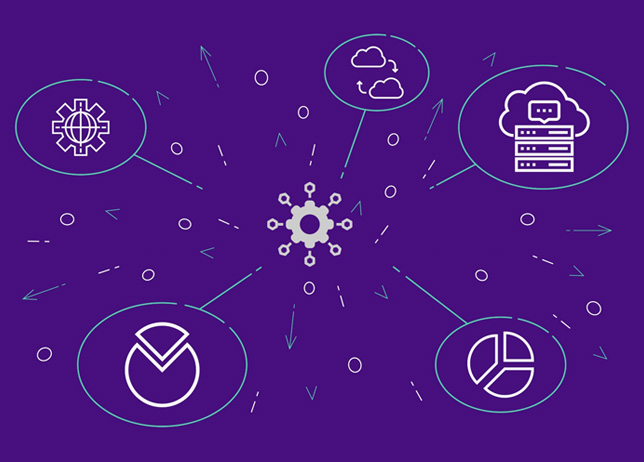Microservices Can Help Banks Craft Experience Engineering

It’s Not About Scale or Speed — It’s About Customers!
To transform digitally, one must create new products, as well as, transform existing ones to suit the changing business priorities. Successful digital transformation hinges on the ability to unlock the enormous business potential of customer experiences for a bank. Any strategy which focusses on engineering superior customer experiences for banking leaders is the right step towards successful transformation.
Microservices – an IT model that breaks down slow-moving, monolithic IT systems into multiple small independent services that are highly decoupled and self-contained – has grown to become a vital asset for financial services companies on their digital transformation journeys. This model is increasingly used by large organizations who have a technological appetite to fuel their growth hunger. According to a research report, the microservices market is estimated to grow to be a $32 billion by 2023. This claim is validated by another survey report which suggests 87% of the respondents are using or considering multiple technologies for developing microservices and 92% of the entities that use microservices noted an increase in the total number of instances they are running.
While the banks are upbeat about adapting the architecture, there are a set of challenges that come with this evolution, some of them are –
Culture– Changing the core architecture of an enterprise needs a buy-in from all the stakeholders from within the organization. It is important that a reorganization happens with amiable people come together to chart a plan and execute to avoid any disastrous scenario.
Managing Microservices – As the number of microservices increases, managing them gets more challenging. According to this survey 29% of the respondents, are facing difficulty integrating with other applications or platforms. This could prove to be a monolithic challenge for the banks, since there are too many moving parts in the software architecture of a bank. This challenge could be overcome by implementing in-house tooling and subscribing to the right platform.
Time and resources- 56% of the respondents have expressed concerns over costs and 53% were concerned on finding and retaining skilled talent. Another survey suggests involving vendor SMEs early on in the transformation cycle will immensely help. Ideally, banks should choose a vendor who is able to conceive and apply digital for banks in the context of customers, their journeys, and the various experience points across these journeys.
Fault Tolerance – It is important that individual services do not bring down the overall system. Fault tolerance at the service level, and more importantly, at the overall solution level, is critical. Given the complexity of a microservices environment and the complex dependency chains, failure is inevitable. Microservices need to be able to withstand both internal and external failures. Robust resiliency testing is key to successful issue preparedness.
The set of challenges could be intimidating for certain organizations. So how to decide on when to transform to a microservices based architecture? Here is a suggested checklist,
- If the bank does not have a tight deadline; microservices require you to research and architecture planning to ensure it works.
- The organization has a great team with knowledge of different programming languages.
- The bank potentially has a few development departments (irrespective of their geographic locations/time zones).
- If the bank has an existing monolith app and see problems with parts of application that could be split across multiple microservices.
Banks like Monzo have built themselves purely on a distributed and microservices based architecture. They currently run an active datacentre which avoid failovers and relies on a SME vendor which ensure data encryption and features that are compliant with the laws of the land. Experience Engineering brings together the art of reimagining digital transformation by applying the rigorous science of architecting unique customer journeys. Monzo bank, notably is enabling superior customer experiences which are powered by next-gen technology practices.
Similarly, a customer of Maveric Systems – a large global bank with its key operations in Singapore achieving the business vision of realizing faster disbursement of unsecured loans for its ecommerce customers by successfully partnering with us, in building E2E digital experience by creating microservices for instant account opening, seamless payments/loans etc. with our deep understanding of banking domain – cutting across sub domains, products, technologies, processes and workflows.
Microservices is the future and if the global banking organizations execute their strategy in the right way and along with a right partner, there are a multitude of benefits.
- Greater agility with faster time to market
- Enhanced security, since services can be isolated and a security breach does not necessarily threaten an entire application.
- Continuous integration and deployment
- Improved scalability
- Higher developer productivity
- Easier debugging and maintenance
- Enable developers to change and re-deploy software without fear of compromising the core application.
Today’s customers choose their banks by the customer experience it can offer. In a digital world, only the companies that are digital-first and customer-first can survive. We at Maveric, Conceptualise banking operations with all associated technologies and methodologies (Agile, DevOps, Cloud and Containerization) which are designed keeping customer adoption in mind are a great way to craft a success story, and as they say well begun is half won! So, has your bank well begun?
View


